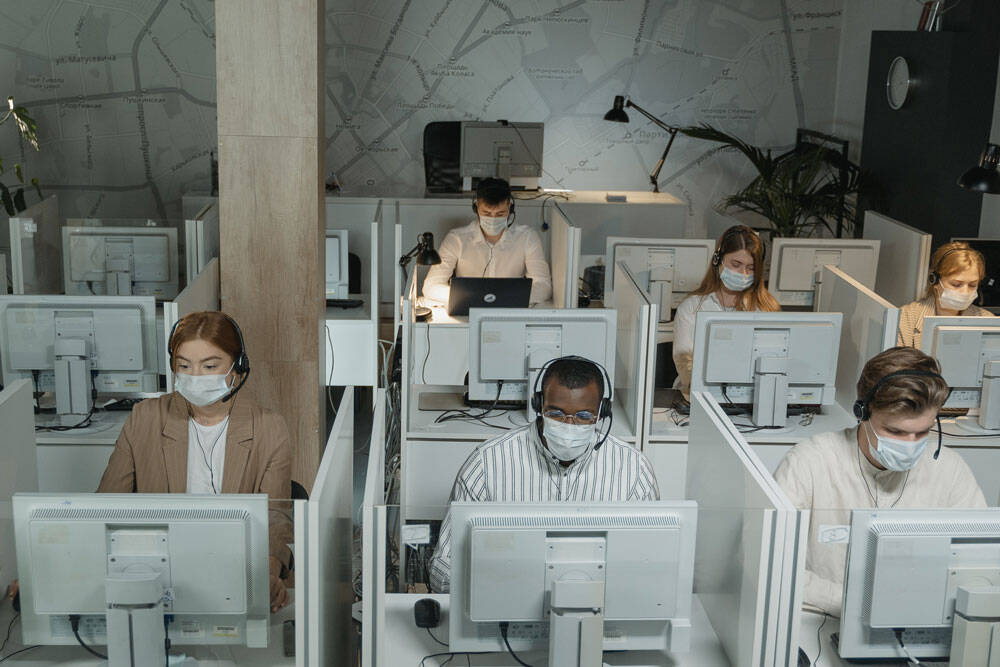Source: Cubed: A Secret History of the Workplace by Nikil Saval. London Review of Books, (2014)
While working at home is becoming more and more efficient and everyone is used to e-mail, Google Docs, teams, meets, chat channels, livestreams and online presentations; the question arises: ‘What is the office space for? Is it for working efficiently at five days a week, away from screaming kids, or small apartments? Will it become a place where employees get to gather every once in a while to brainstorm? Or will it be a work utopia, like the way the architects from Casper Schwartz envision it? Once we figure out what the function of our office will be, shape, design and in-house functions, will probably change drastically. Maybe we will be able to cook our stews at the office?
According to the architects from the Casper Schwartz bureau, normal offices are based on the presence of people, not on their personalities, habits, preferences, and needs. Now that we have all experienced how to work remotely and in freedom, this should be turned around.
As stated on the architects’ website, Red Bull’s Habitoor should have such a magnetic effect that employees want to go to it as much as possible, because they want to be part of the Red Bull vibe, and because it is the most inspiring place to work and meet. Red Bull’s employees can work there however they want; creating dynamics and seeking tranquility. It should be a place where people can have fun, build memories and make new plans. A place where the human factor is decisive.
Best practice: Red Bull’s office
A company that already expressed their vision on what their new office should look like after COVID-19 is Red Bull. Their new headquarter in Amsterdam is designed to exceed the home work space on all fronts, as they embraced the vision of Casper Schwartz’ architectural firm who created the concept ‘habitoor’. The word ‘habitoor’ is a combination of the Dutch word for office (kantoor) and habitat, which stand for ‘natural environment’.
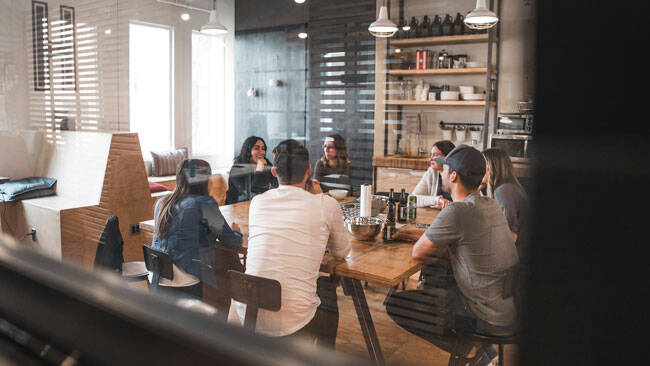


Fun at work
The ‘fun’ office seemed to be peaking and popping up everywhere from the zero’s on - even very conservative companies seemed to embrace salad bars just before COVID-19 hit. And that’s when working from home became the new normal. After a short period of being stunned, in a lot of companies the work pace started flowing as per usual because digital tools made it possible. For some, working from home – in ways – became convenient; being able to do your washing during the day, or finally trying out a new recipe that needs simmering for a couple of hours. And let’s not forget real estate prices have been at an all time high in a lot of American states and European countries. Some companies chose not to renew the lease on their building, to save costs.
The virtual home office
Then came the internet. Some researchers thought that after the computer revolution, paperless and non-territorial offices would become common. It was even argued that the office could become entirely virtual - little did they know it would take another couple of decades and a global pandemic before the virtual home office really took off. So it wasn't the computer revolution that made us work remotely. During the late nineties Silicon Valley and the new techbrands that were located there, developed a new workplace culture that seemed to align with the original philosophy of the Schelle brothers. Startups made their workplaces playful and informal, to attract young knowledge workers. Company culture and identity became important. Table tennis tables, all you can eat salad bars, real barista coffee corners and Office Happiness Managers, supported the idea of spontaneous encounters and made the office into a place where people weren't constantly looking at the clock, to rush home when the workday was over.
Bürolandschaft and cubicles
For a long time people worked in large open spaces filled with rows of desks. Only employees with a higher status were granted the luxury of a private office, away from the chaos and cigarette smoke of the general workfloor. In Germany the famous Schnelle brothers’ space-planning firm, invented Bürolandschaft, translated as office landscapes. Their philosophy: the office had to be viewed as organic, natural and human. But what happened in the decades that followed was that open office spaces were often filled with grey, soulless, boring cubicles, which were especially popular during the '80s and '90s of the last century.
Wikipedia describes the office as a building, room or area where a company’s employees perform work in order to support their employers goals; it's a location of one’s duty. But since the first commercial offices appeared in the United States during the beginning of the nineteenth century, their shapes and forms have evolved tremendously.
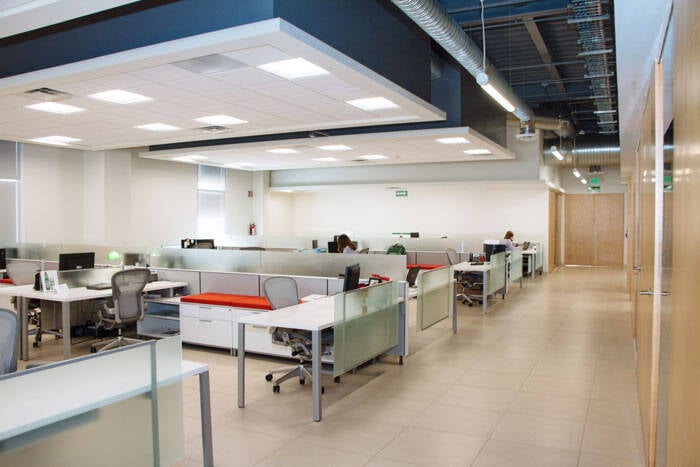
It seems the way we work and the places we use as office space have made a one eighty turn in the past decade. The aftermath of COVID-19 will definitely affect the way we work in the years to come.
Lisa Appels Xiao Er Kong
From cubicle zombies to Office Happiness Managers
How our workplace is constantly evolving
trendwatch
4 min
from cubicle zombies to office happiness managers







Source: Cubed: A Secret History of the Workplace by Nikil Saval. London Review of Books, (2014)
While working at home is becoming more and more efficient and everyone is used to e-mail, Google Docs, teams, meets, chat channels, livestreams and online presentations; the question arises: ‘What is the office space for? Is it for working efficiently at five days a week, away from screaming kids, or small apartments? Will it become a place where employees get to gather every once in a while to brainstorm? Or will it be a work utopia, like the way the architects from Casper Schwartz envision it? Once we figure out what the function of our office will be, shape, design and in-house functions, will probably change drastically. Maybe we will be able to cook our stews at the office?

According to the architects from the Casper Schwartz bureau, normal offices are based on the presence of people, not on their personalities, habits, preferences, and needs. Now that we have all experienced how to work remotely and in freedom, this should be turned around.
As stated on the architects’ website, Red Bull’s Habitoor should have such a magnetic effect that employees want to go to it as much as possible, because they want to be part of the Red Bull vibe, and because it is the most inspiring place to work and meet. Red Bull’s employees can work there however they want; creating dynamics and seeking tranquility. It should be a place where people can have fun, build memories and make new plans. A place where the human factor is decisive.
Best practice: Red Bull’s office
A company that already expressed their vision on what their new office should look like after COVID-19 is Red Bull. Their new headquarter in Amsterdam is designed to exceed the home work space on all fronts, as they embraced the vision of Casper Schwartz’ architectural firm who created the concept ‘habitoor’. The word ‘habitoor’ is a combination of the Dutch word for office (kantoor) and habitat, which stand for ‘natural environment’.

Fun at work
The ‘fun’ office seemed to be peaking and popping up everywhere from the zero’s on - even very conservative companies seemed to embrace salad bars just before COVID-19 hit. And that’s when working from home became the new normal. After a short period of being stunned, in a lot of companies the work pace started flowing as per usual because digital tools made it possible. For some, working from home – in ways – became convenient; being able to do your washing during the day, or finally trying out a new recipe that needs simmering for a couple of hours. And let’s not forget real estate prices have been at an all time high in a lot of American states and European countries. Some companies chose not to renew the lease on their building, to save costs.
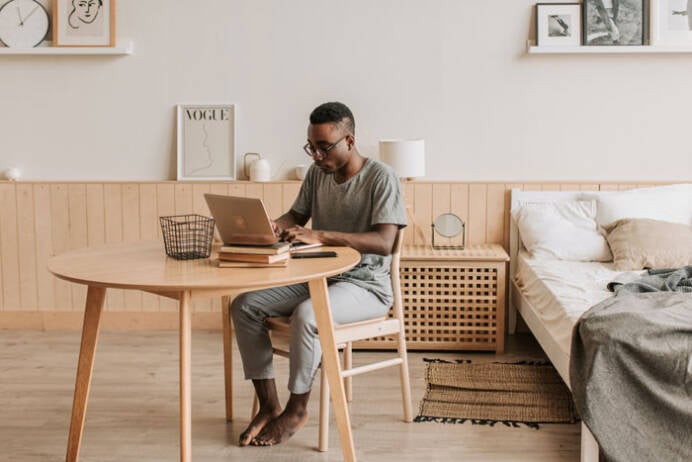
The virtual home office
Then came the internet. Some researchers thought that after the computer revolution, paperless and non-territorial offices would become common. It was even argued that the office could become entirely virtual - little did they know it would take another couple of decades and a global pandemic before the virtual home office really took off. So it wasn't the computer revolution that made us work remotely. During the late nineties Silicon Valley and the new techbrands that were located there, developed a new workplace culture that seemed to align with the original philosophy of the Schelle brothers. Startups made their workplaces playful and informal, to attract young knowledge workers. Company culture and identity became important. Table tennis tables, all you can eat salad bars, real barista coffee corners and Office Happiness Managers, supported the idea of spontaneous encounters and made the office into a place where people weren't constantly looking at the clock, to rush home when the workday was over.
Bürolandschaft and cubicles
For a long time people worked in large open spaces filled with rows of desks. Only employees with a higher status were granted the luxury of a private office, away from the chaos and cigarette smoke of the general workfloor. In Germany the famous Schnelle brothers’ space-planning firm, invented Bürolandschaft, translated as office landscapes. Their philosophy: the office had to be viewed as organic, natural and human. But what happened in the decades that followed was that open office spaces were often filled with grey, soulless, boring cubicles, which were especially popular during the '80s and '90s of the last century.
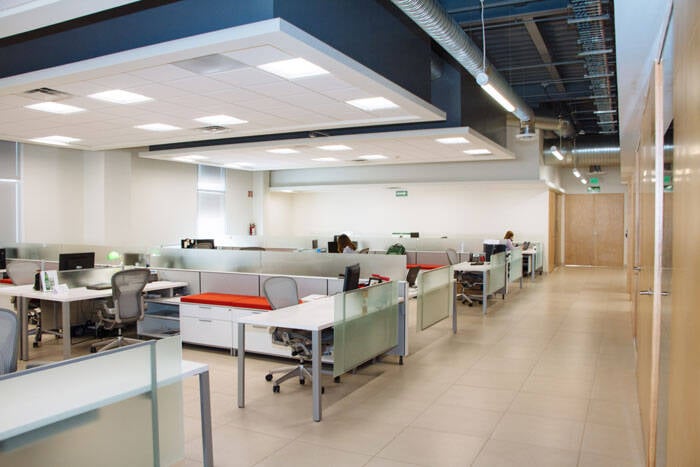
Wikipedia describes the office as a building, room or area where a company’s employees perform work in order to support their employers goals; it's a location of one’s duty. But since the first commercial offices appeared in the United States during the beginning of the nineteenth century, their shapes and forms have evolved tremendously.
It seems the way we work and the places we use as office space have made a one eighty turn in the past decade. The aftermath of COVID-19 will definitely affect the way we work in the years to come.
Lisa Appels Xiao Er Kong
How our workplace is constantly evolving
From cubicle zombies to Office Happiness Managers
4 min
